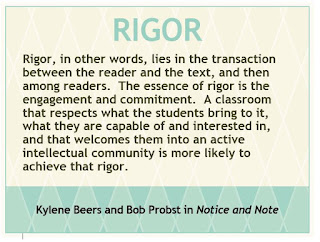 |
| Brent took this picture standing in the Eel River. |
Standing
in middle of the Eel River in northern California, I felt extremely blessed to
be surrounded by the some of the most dramatic scenery our country has to
offer. The river zig-zags alongside. The Highway of the Giants, a 32-mile
stretch of enormous redwoods, picturesque mountains, and the famous Pacific
coastline.
Fly-fishing is my favorite
hobby, and I could not be in a better spot.
As
time passed, however, I wasn’t catching any fish. I tried various dry-flies and
nymphs throughout the morning, but things didn’t get better. Maybe this wasn’t my day. Maybe I was going
to be “skunked.”
While
wading back to my entry point, I kept casting, and finally my line went
taut! Adrenaline coursed through my
veins as I landed a beautiful but unusual fish—a species that I had never
caught before.
 |
| What a great catch--or is it? |
Being
a proponent of “catch-and-release” fishing, I quickly snapped a picture and let
my new friend go back to his environment.
I was absolutely certain that this unusual fish had a very important
role to play in the ecosystem and that I was doing the right thing by letting
it go.
Shortly
after leaving the river and driving down the highway, I found a nature center
with wildlife models to help with plant and animal identification. When I went inside, to my great surprise, I
found a figure that looked identical to the fish that I had just caught. The
sign under the model labeled it a “Sacramento Pikeminnow.” The sign went on to describe how this fish is
actually an invasive species relocated by humans several decades ago.
As it
turned out, this beautiful fish species is almost single-handedly destroying
the Eel River ecosystem. In fact, the DNR pleads with fisherman to keep the Sacramento
Pikeminnow and not release it back into the waterway. My discovery completely changed the way I
looked my catch.
Invasive Species in the Classroom
What
does my disappointing fishing story have to do with instruction? Like the “beautiful” fish that did not belong
in the Eel River, could there be good-looking lessons, activities, and/or teaching
practices that do not belong in our classrooms?
 |
| Highway of the Giants |
If we
are going to make the HSE21 shift, we will need to make changes from
some former teaching patterns because of their invasive nature. These are
practices which tend to kill off innovative learning and can actually destroy
the classroom environment for our young people.
An Example from Kylene and Bob
 |
| Monologic questions check understanding. Dialogic questions create understanding? Is using too many monologic questions an invasive species in our classrooms? |
Kylene
Beers and Bob Probst ask us hypothetical questions on page 61 of Reading Nonfiction: “Do we really have
time to let students create meaning? Wouldn’t it be more efficient to simply
tell them what they need to know?” Going on from there, they contend that creating
meaning is the essence of learning—even though it’s messy and
slow. Rigor is not found in controlling
the input of all knowledge. It’s actually found in the struggle, the energy,
and the attention students bring to the task at hand.
If
Kylene and Bob are right—and there is no doubt they are—one invasive classroom
practice might be the overreliance on telling, rather than having students
create meaning. A classroom built on telling limits innovation and squelches
student voice, choice, and learning.
A Key Question: What are Invasive
Species in HSE?
A
German proverb says, “To change and to improve are two different things.” The change process is purposeful and involves
removing invasive classroom practices.
The shift to HSE21 will require careful discernment and
reflection; however, it is critically important to preserve classroom
environments that foster engagement and inquiry and result in greater student
learning.
 |
| When should we catch and release an instructional strategy, and when should it not be returned to the classroom? |
Perhaps
one invasive species is fostering an overly-controlled school environment. Maybe, it is using single-perspective text which
prevents students from wrestling with deeper issues. Could another invasive
species be focusing more on numbers in school data, rather than identifying the
reasons for the achievement (or lack thereof)? Another might be that we have
become afraid of and avoid courageous professional conversations.
When
we do identify the equivalent of Sacramento Pikeminnows in our classrooms and
schools, we need to remove them as soon as possible in order to preserve an
environment that fosters engagement, inquiry, and improved student growth.
When
it comes to invasive species—in the Eel River or in our classrooms—don’t
catch-and-release!
 |
| Brent giving a demonstration of his hobby to students. |
Respond to Brent at bfarrell@hse.k12.in.us
We hope your week is a great one!
Your HSE Teaching and Learning Team
- Jan Combs, Assistant Superintendent of Teaching and Learning
- Stephanie Loane, Director of Elementary Education
- Tom Bell, Director of Special Education
- Jeff Harrison, Director of Educational Technology
- Phil Lederach, Director of Secondary Education








